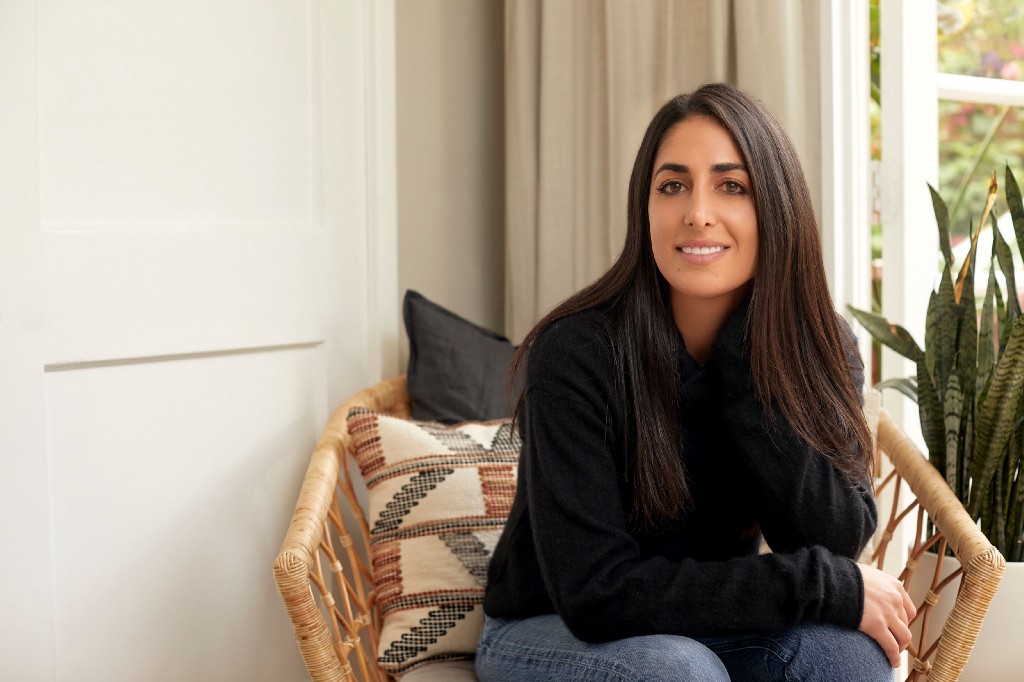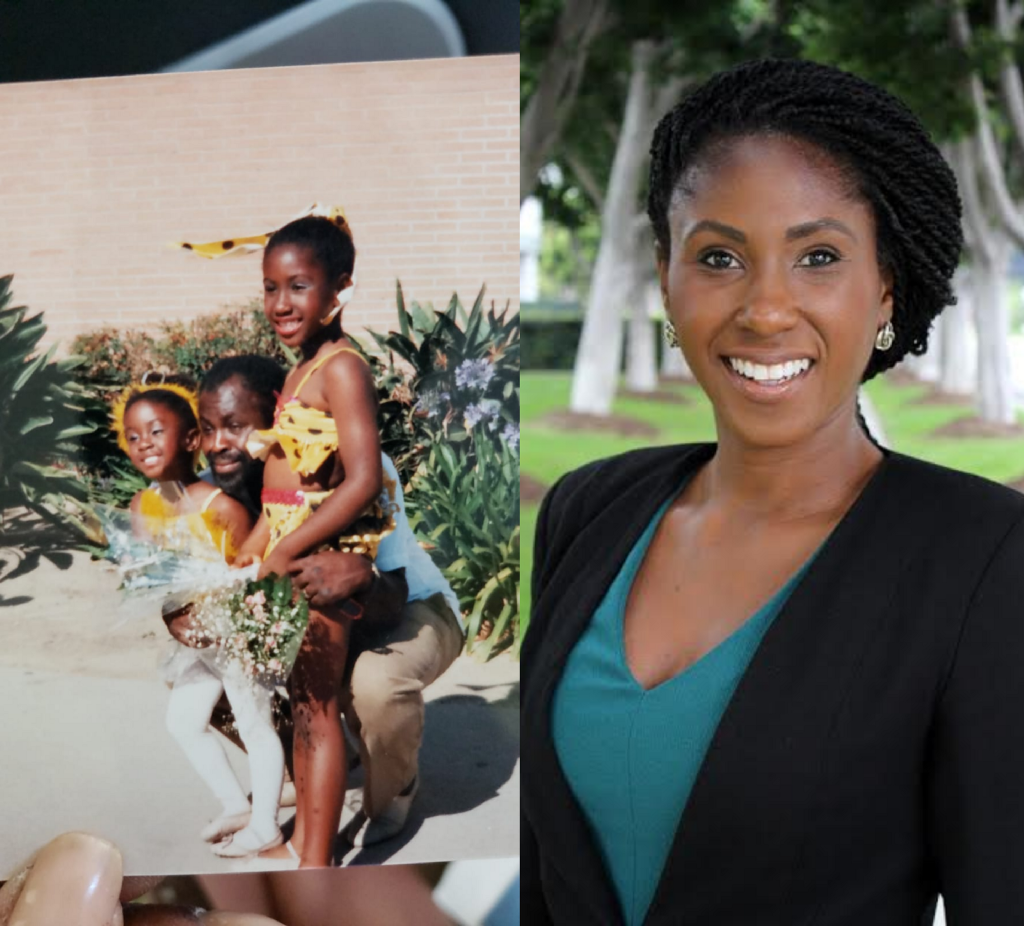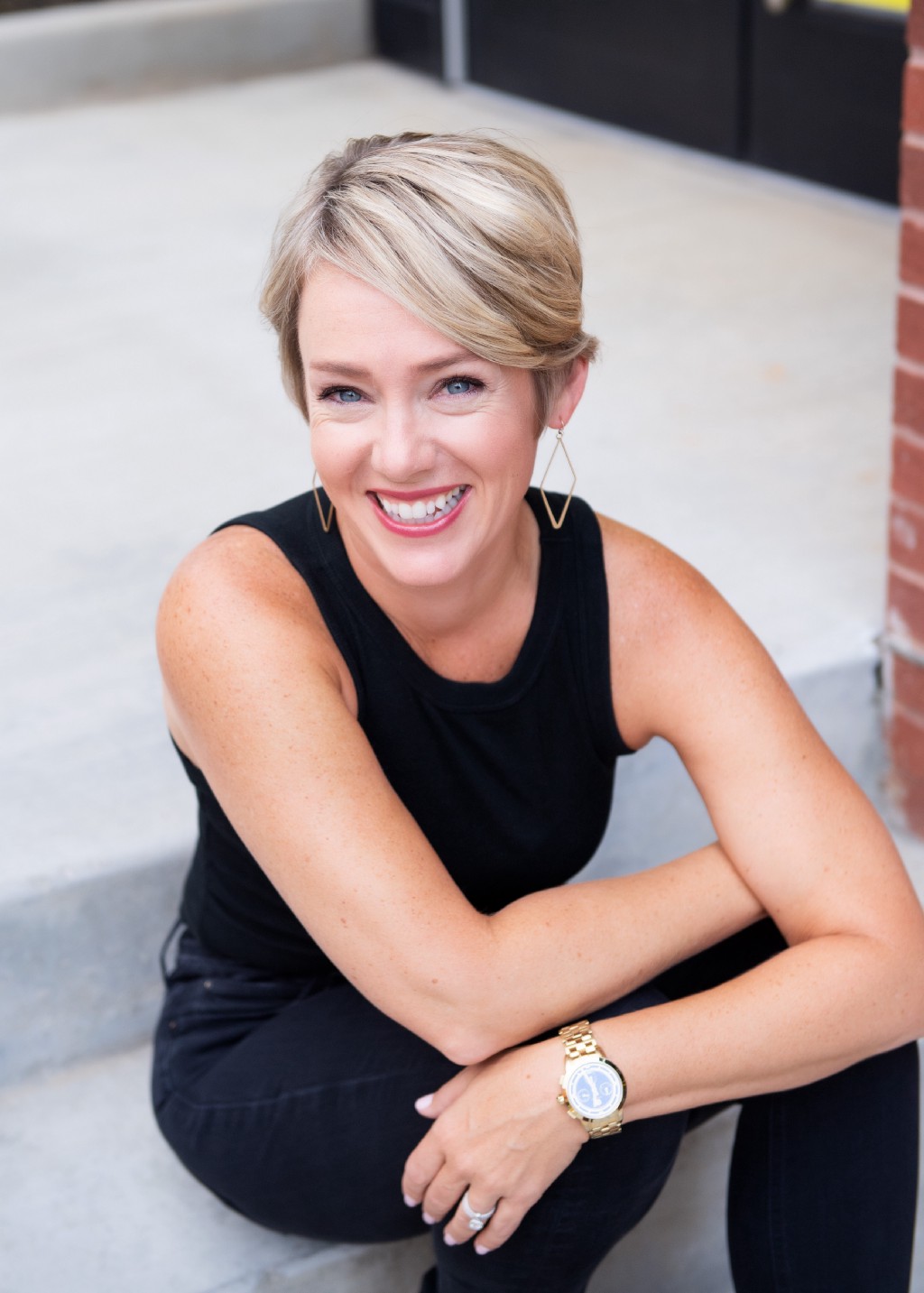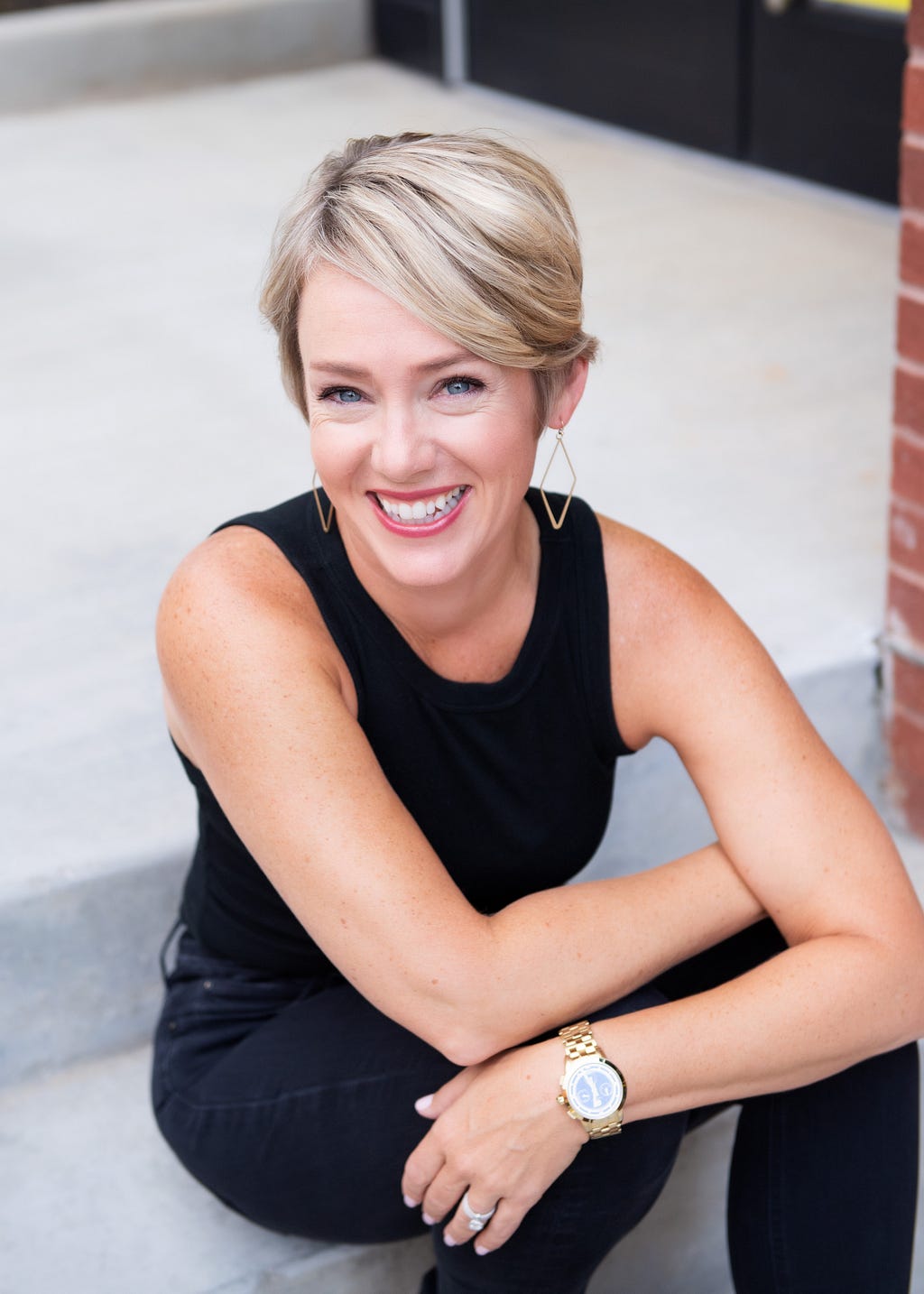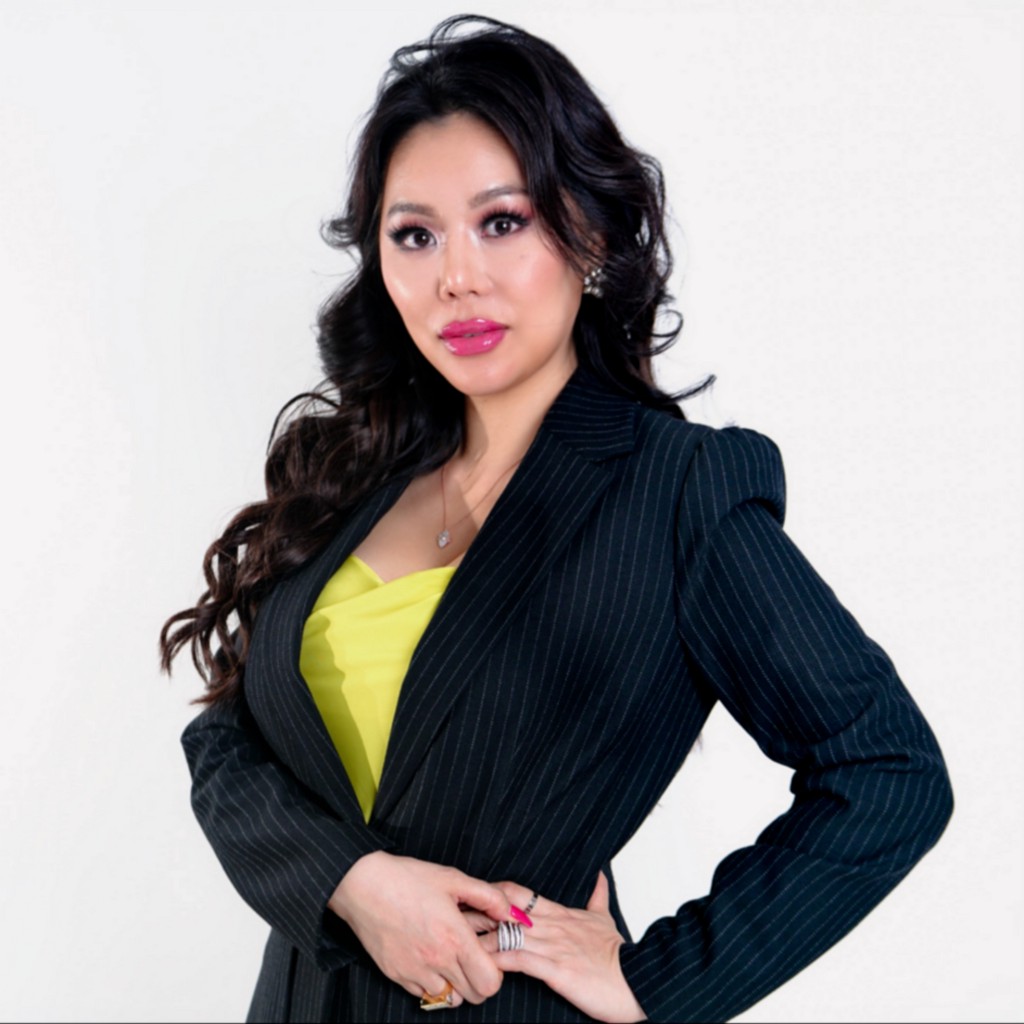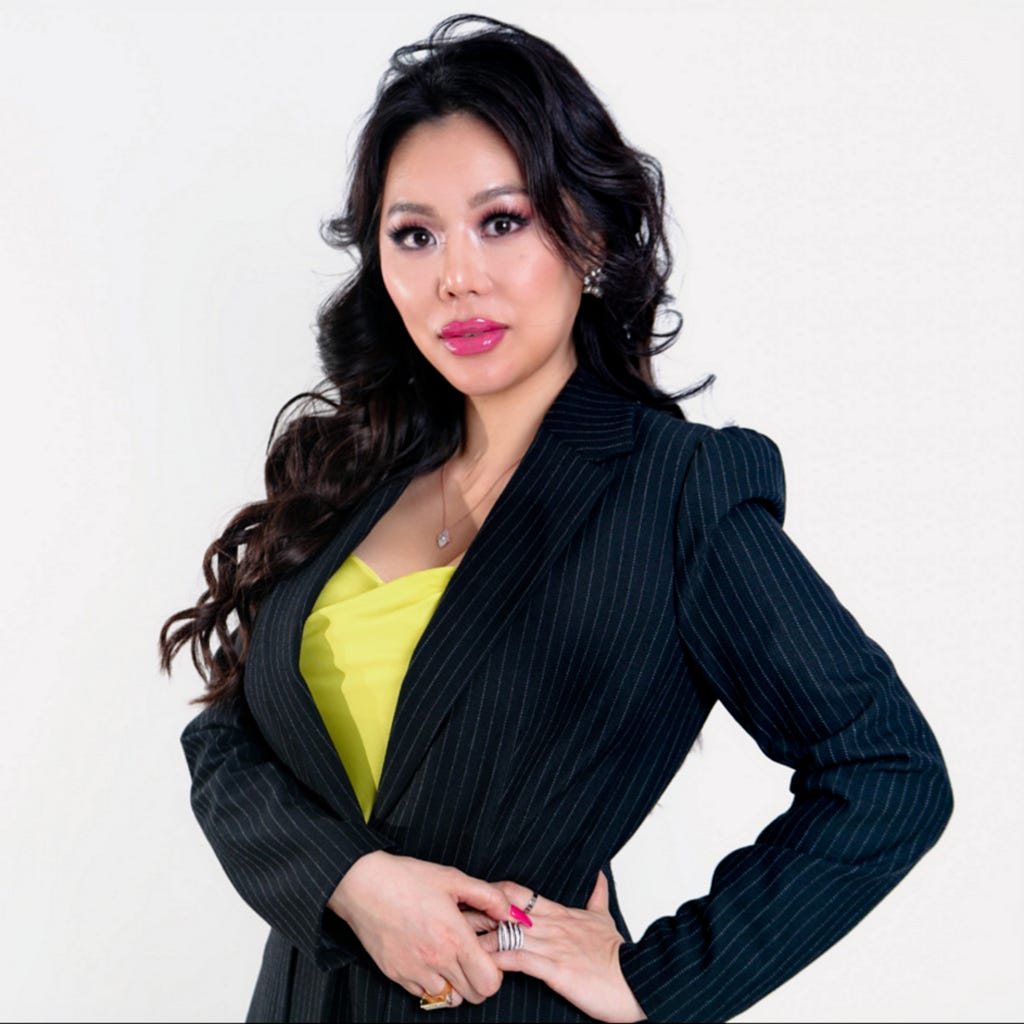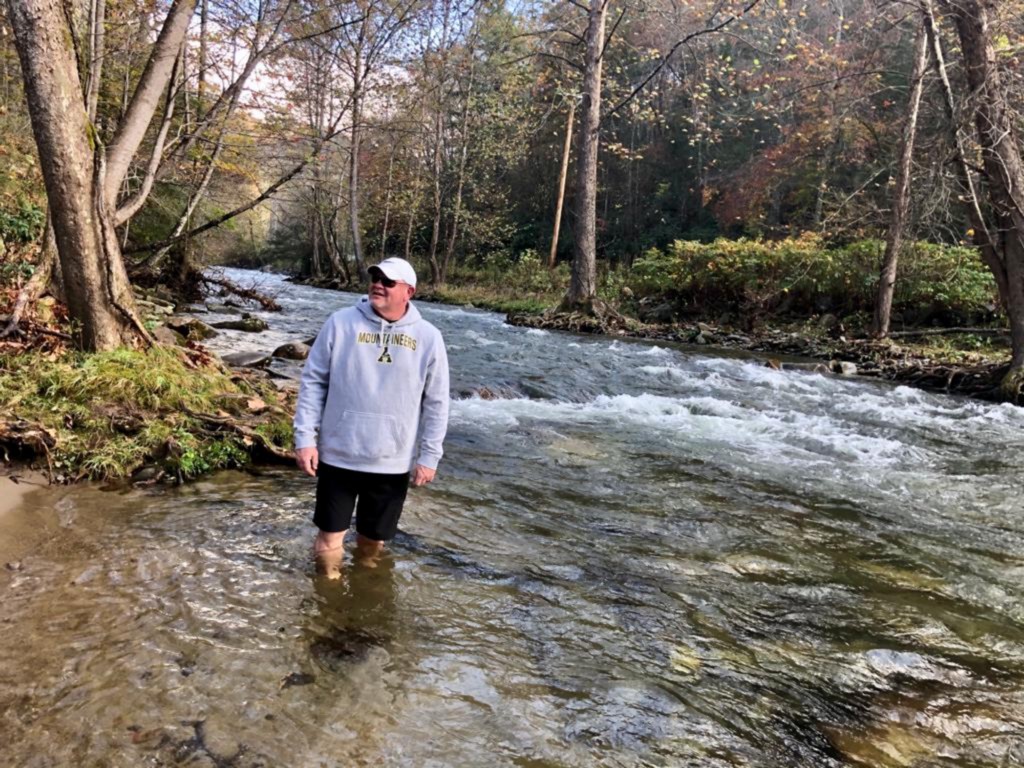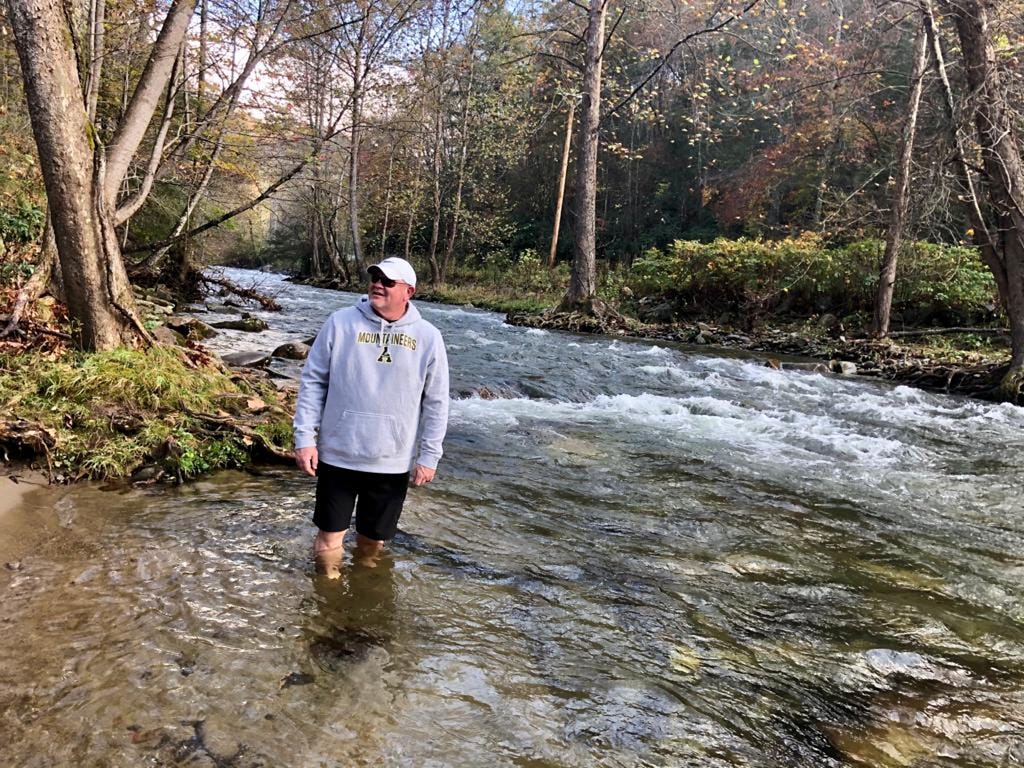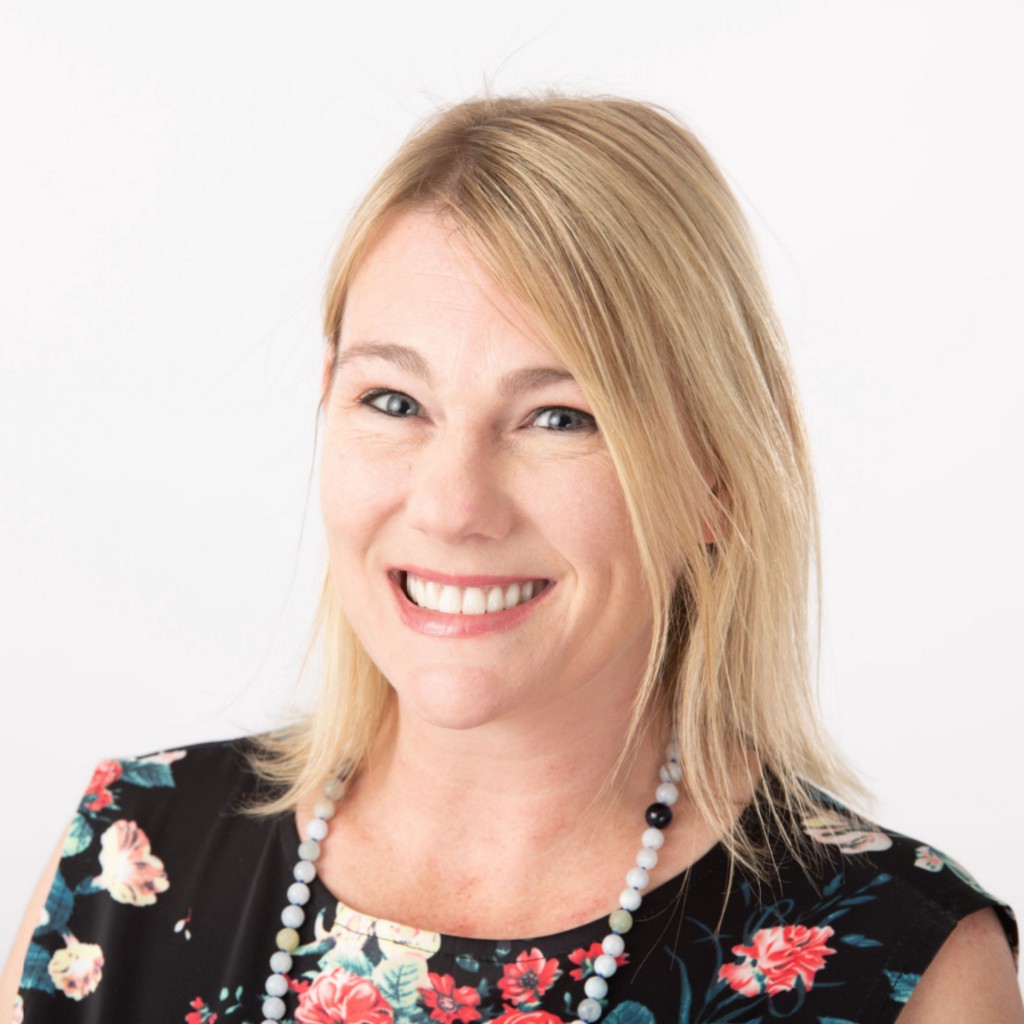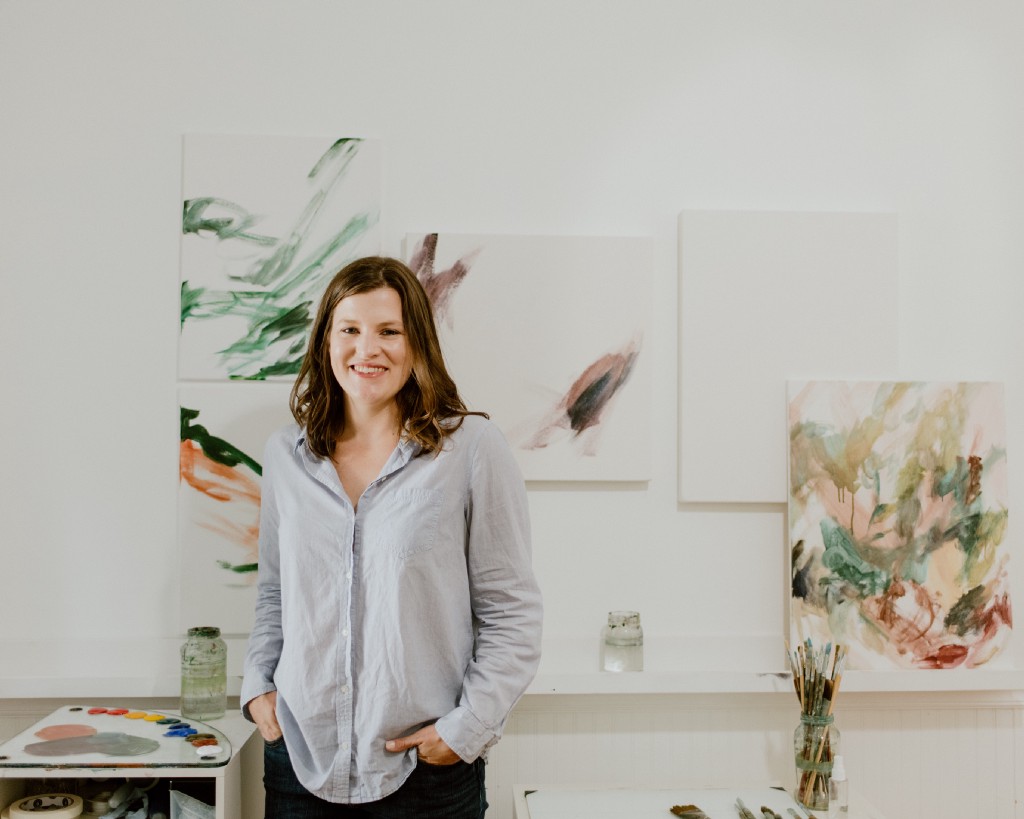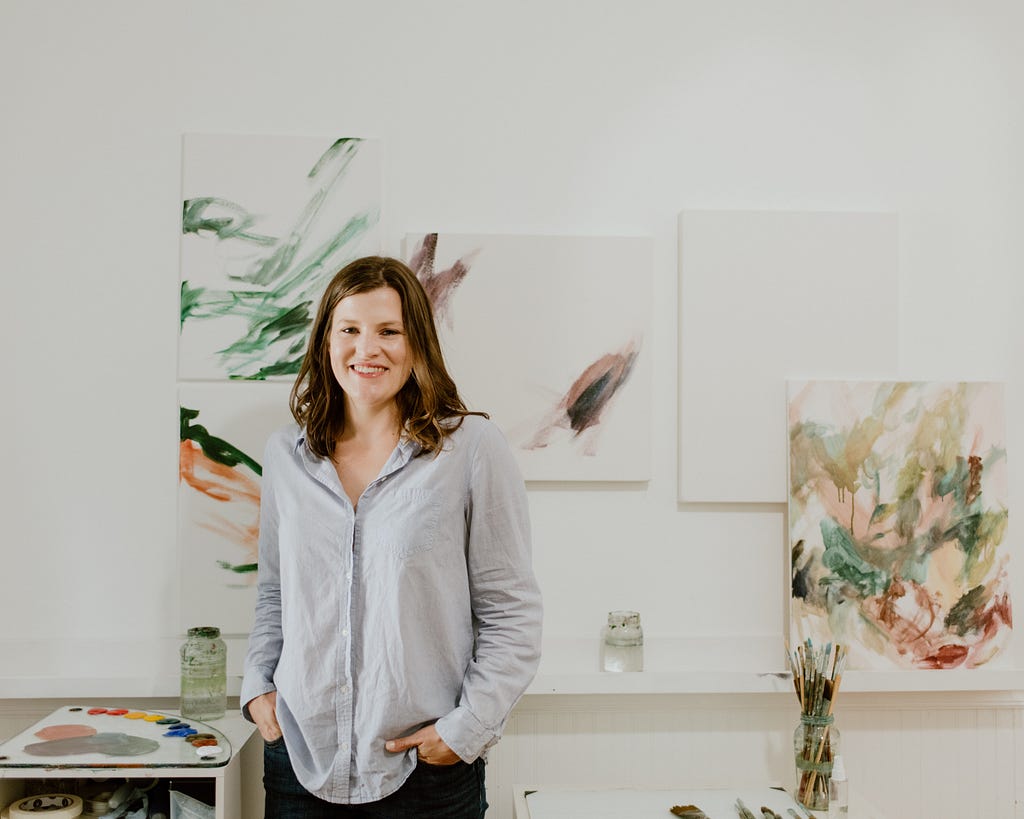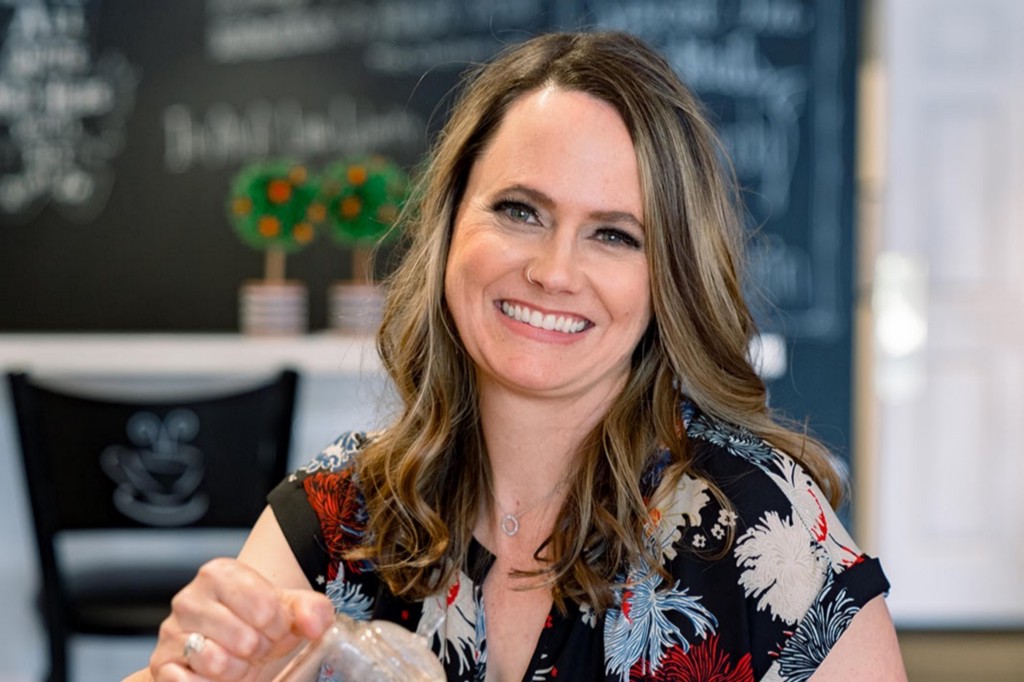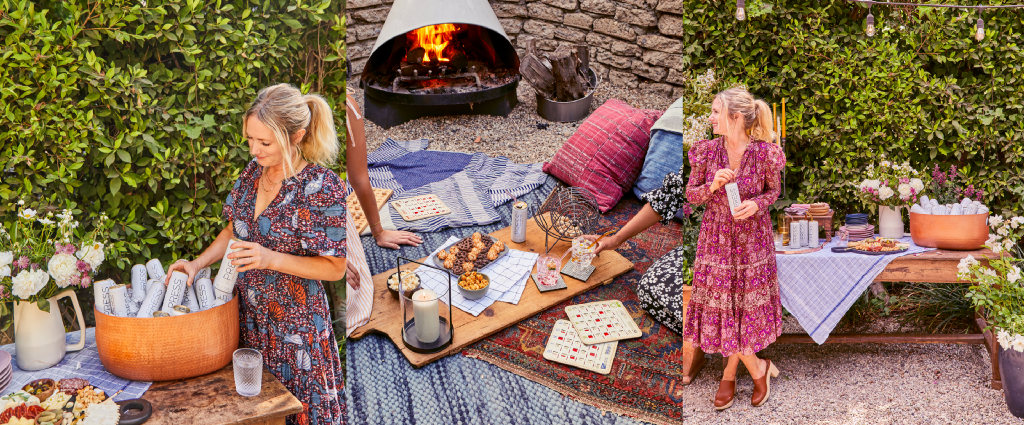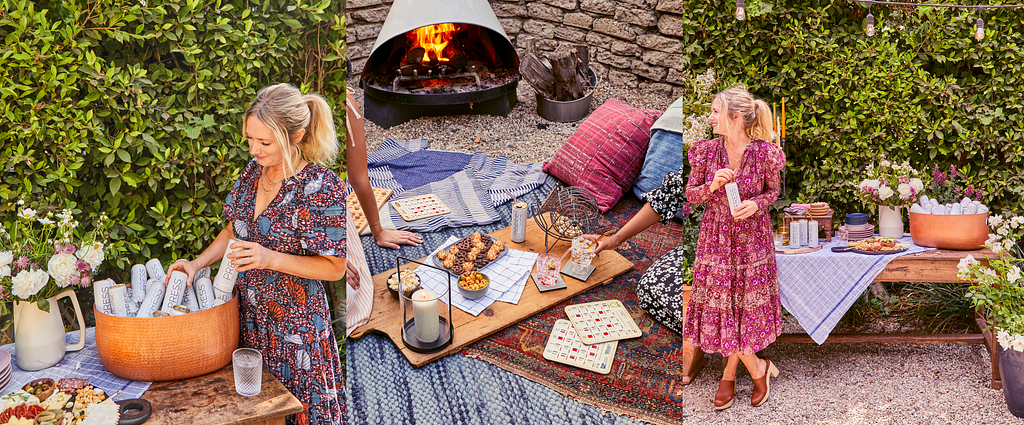Female Founders: Haley Rosen of Just Women’s Sports On The Five Things You Need To Thrive and Succeed as a Woman Founder
An Interview with Candice Georgiadis
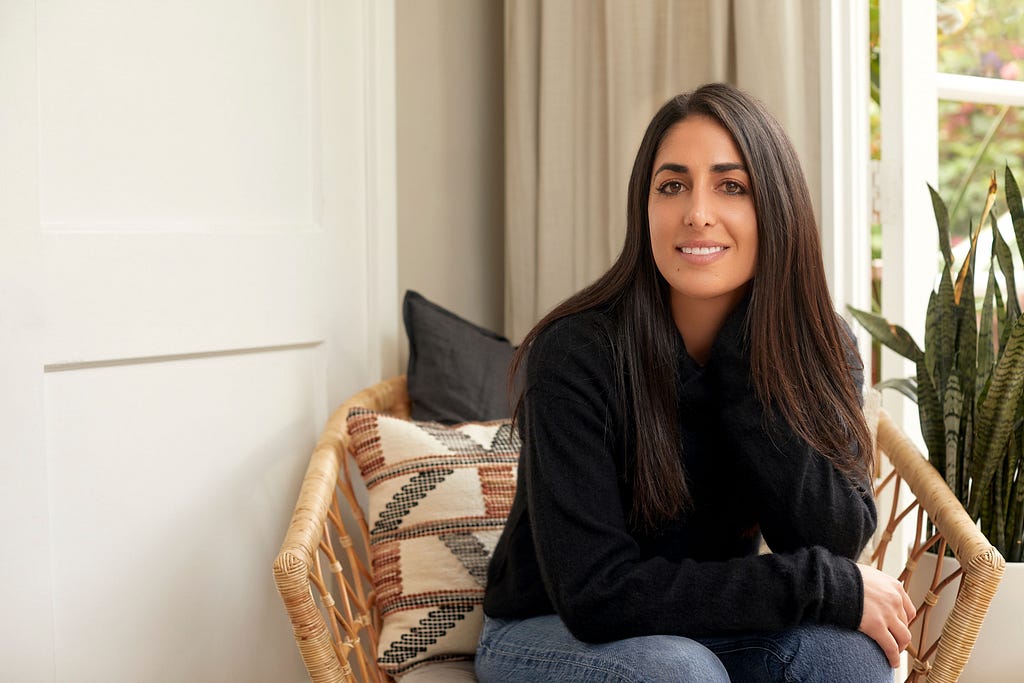
Trust yourself: I can’t tell you how many people have told me that “women’s sports will never be big.” Or that we need to be more lifestyle than sports. Or that we need to be “girlier.” But I was really stubborn in holding true to our vision and brand, and we’re now seeing that our unique approach has turned out to be our biggest differentiator.
As a part of our series about “Why We Need More Women Founders”, I had the pleasure of interviewing Haley Rosen.
Haley Rosen is the CEO & Founder of Just Women’s Sports, a digital-first media brand 100% focused on women’s sports, providing fans with in-depth coverage, interviews, highlights, analysis, podcasts, newsletters and everything else that has been lacking for far too long in women’s sports. Rosen is also a former pro soccer player, and was an All-Pac-12 midfielder at Stanford.
Driven by frustration at not being able to follow the careers of her friends, former teams, and coaches after she retired from professional soccer, Haley Rosen founded Just Women’s Sports in 2020 to change the game for women’s sports coverage.
Today, Just Women’s Sports is a digital-first consumer media brand providing fans with in-depth coverage, exclusive interviews, highlights and analysis through editorial content, podcasts, video series, a bi-weekly newsletter, and a first-of-its-kind live scoreboard dedicated to major women’s sports leagues.
Following a year of explosive growth, JWS now reaches more than seven million passionate women’s sports fans on a monthly basis, up 300% year-over-year.
In May 2021, Rosen’s company closed a seed funding round headlined by institutional investors including Will Ventures, Thirty Five Ventures, DRIVE by DraftKings, alongside athlete investors Arike Ogunbowale, Elena Delle Donne, Hilary Knight, Kelley O’Hara, Sam Mewis, and Kevin Durant.
Prior to founding Just Women’s Sports, Rosen worked at a tech startup in San Francisco where she combined her curiosity in enterprise usage of virtual reality with her experience as a professional athlete. She was an All-Pac-12 midfielder at Stanford while earning her BA in science, technology and society and masters in communication with a focus on the societal implications of media multitasking.
Rosen has been honored as one of Sports Business Journal’s New Voices Under 30.
Thank you so much for doing this with us! Before we dig in, our readers would like to get to know you a bit more. Can you tell us a bit about your “backstory”? What led you to this particular career path?
I played soccer in college, which was followed by a brief professional career in the U.S. and abroad. Afterwards, I moved to the Bay Area and started working in tech, and for the first time, I found myself on the outside of women’s sports looking in. I wanted to follow my friends that were still playing, coaches I played for, teams I had been on, and I genuinely couldn’t do it. The games weren’t easily accessible to watch, and analysis was hard to find. None of this made any sense to me. I had played in packed stadiums, I had interacted with enthusiastic fans, and I just kept asking myself, ‘Why doesn’t the media coverage reflect the excitement that’s out there?’
Just Women’s Sports was founded to fill this gap in the sports media industry by creating a comprehensive platform for athletes and fans of women’s sports, one that delivers the hype, analysis, personalities and stories that make women’s sports so awesome.
Can you share the most interesting story that happened to you since you began leading your company?
I’ve looked up to Billie Jean King for a long time, and I recently had the privilege of meeting her at the US Open. She was every bit the legend I imagined her to be, and in many ways, I feel like Just Women’s Sports is a continuation and extension of her legacy
Can you share a story about the funniest mistake you made when you were first starting? Can you tell us what lesson you learned from that?
To be honest, none of my mistakes felt funny at the time, but in hindsight…losing our Instagram account probably fits the bill. Just Women’s Sports got its start as an Instagram account, where I just posted awesome highlights that I found (think: “House of Highlights,” but for women’s sports.) It was all fun and games until the account got suspended for violating copyright — turns out, you can’t just rip highlights from wherever you want!
At the time, this was totally devastating. But while we were jumping through hoops and cold-messaging several strangers on LinkedIn to get the account back, we also stood up our newsletter and website. To me, the lesson was that there are going to be bumps along the road, and some of them might feel insurmountable at the time, but that if you’re onto something and keep pushing, good things can happen.
None of us are able to achieve success without some help along the way. Is there a particular person who you are grateful towards who helped get you to where you are? Can you share a story about that?
There are so many people who have contributed to what we’ve managed to achieve so far (still a long ways to go!), and I want to give special thanks to all of the early employees at Just Women’s Sports who took a bet on this team and company. If there’s one particular person I need to shout out though, it’s probably Eric Chen at OVO Fund.
I met Eric a little bit before starting JWS and kept in touch during the early days. Like I said, we got our start as an Instagram account, and when we only had about 20k followers (and no other channels), Eric offered to invest in me and this idea. Even I thought it was kind of crazy at the time that he wanted to give his money to a kid with an IG account and a big idea. But I can’t thank him enough for believing in our vision and believing that we could get there!
Ok, thank you for that. Let’s now jump to the primary focus of our interview. According to this EY report, only about 20 percent of funded companies have women founders. This reflects great historical progress, but it also shows that more work still has to be done to empower women to create companies. In your opinion and experience what is currently holding back women from founding companies?
To be totally honest, I think the whole narrative around this is way off base. We need to stop “supporting women” as if it’s a charitable cause and start legitimately investing in them.
Investing in someone doesn’t mean rewarding them for what they’ve done. It’s about betting on what they might do in the future. To use sports as an example, the MLS struggled for years, if not decades, to find its economic footing. But it continued to attract investors who believed in the future of men’s soccer in America. On the women’s side, leagues and companies are regularly dismissed because they haven’t yet hit profitability. It’s a double standard, in which one half of the room is judged based on their potential, while another half is told they have to already be producing.
“Celebrating” or “empowering” women is great. But to take the next step, we need to shift the mindset to focus on what women can do, versus just highlighting what they’ve already done.
Can you share a few reasons why more women should become founders?
I don’t want to speak for a whole gender, but I also don’t want women to be deterred from pursuing their dreams just because there are hurdles in the way. What I will say is that even on my longest, hardest, most exhausting days, this work is still the most rewarding thing I’ve ever done.
What are the “myths” that you would like to dispel about being a founder?
One of my biggest learnings has been that I don’t need to know everything. I personally take a lot of pride in recruiting people who are way better at their job than I could ever be. And then it’s my job to point everyone in the right direction, get out of their way, and let great people be great.
Is everyone cut out to be a founder? In your opinion, which specific traits increase the likelihood that a person will be a successful founder and what type of person should perhaps seek a “regular job” as an employee?
Yes, everyone is cut out to be a founder. I really reject the notion that there is some predetermined life that we may or may not be cut out for. If you want to start something, trust yourself and dive in with positive energy.
Now, the question of whether everyone wants to be a founder is different. It’s not nearly as glamorous as it’s made out to be — there are a lot of late nights, a lot of self-doubt, but also a lot of fun. From my experience, I’ve found that there isn’t a secret sauce here, so long as you have conviction and put one foot in front of the other.
Based on your opinion and experience, what are the “Five Things You Need To Thrive and Succeed as a Woman Founder?” (Please share a story or example for each.)
I don’t think thriving as a woman founder is all that different from thriving as a founder, period. There are a few small differences, mainly around confidence and taking up space. There is a high probability that at one or multiple points in your journey, you will literally be the famed “only woman in the room.” It’s not fair or always fun, but you need to have the confidence to step through that door.
We are still in the very early days of JWS, so I’m not sure I can claim to be a successful founder just yet. But here’s some of what I’ve learned along the way:
- Trust yourself: I can’t tell you how many people have told me that “women’s sports will never be big.” Or that we need to be more lifestyle than sports. Or that we need to be “girlier.” But I was really stubborn in holding true to our vision and brand, and we’re now seeing that our unique approach has turned out to be our biggest differentiator.
- Play your game: As an organization, competitors are going to come in, and they are going to have wins. And that’s a good thing — it shows the space is growing. It’s not zero sum, and the only way you can lose is by not playing your game. Know your strengths and do things your way.
- Just go for it: At some point, you have to make the choice to dive in and do whatever it takes to get your company off the ground. Going from 0–1 is all heart and hustle. Worry about the finer points of strategy later, and just get the ball rolling. This is just from my own personal experience building a sports media company, but for what it’s worth, I learned way more from the first 10 Instagram posts we shared than from any TAM analysis I ever did.
- Find balance: I’m a pretty obsessive person, and there’s always going to be more work to do, so I’ve definitely had times where I’m working in every waking moment, and then some. For me, it’s been really important to find time to take care of myself and separate my life and my work. As an athlete, I saw the importance of recovery, and I felt the downsides of overtraining, and I’ve had to take those lessons into my work life as well. I’m at my personal best when I’m more balanced — when I’m sleeping, exercising, spending time with friends/family, I can see things more clearly and avoid getting too emotionally absorbed in the day-to-day.
- Lead with empathy: We’re really fortunate to have built out a really outstanding team at JWS. Every person here is taking a bet on this company/opportunity and placing a lot of trust in me. I feel a responsibility to reward and deepen this trust by listening, learning, and empowering my team.
How have you used your success to make the world a better place?
Research has shown again and again that participation in sports has an overwhelmingly positive impact on girls’ lives. At various age groups, participation is roughly 50/50 for boys and girls, but as they age, girls tend to drop out at a faster rate. With Just Women’s Sports, we believe we can use sports to change the way women are perceived in society. I also think having more girls in sports is upstream of having more women in leadership roles.
You are a person of great influence. If you could inspire a movement that would bring the most amount of good for the greatest number of people, what would that be?
I think the climate crisis has to be on the top of everyone’s list. Nothing else will matter if we don’t have a planet. It’s strange to me that people see environmental concerns as being diametrically opposed to business interests. Thankfully, it seems like that’s starting to change. Saving the planet is good for business, and I think it’s paramount that every company considers their ecological footprint. My hope is that as women’s sports grow, the space can do so in a way that’s environmentally friendly. So much is being built from scratch, that this needs to be a priority.
We are very blessed that some very prominent names in Business, VC funding, Sports, and Entertainment read this column. Is there a person in the world, or in the US with whom you would love to have a private breakfast or lunch with, and why? He or she might just see this if we tag them.
I’ve been fortunate enough to meet and work with many of the people who would have been on this list when I was getting started.
But if you believe in the future of women’s sports and want to get involved, get in touch. This company is going to change the face of sports, and I’m always down to connect with anyone who wants to be a part of the journey.
Thank you for these fantastic insights. We greatly appreciate the time you spent on this
Female Founders: Haley Rosen of Just Women’s Sports On The Five Things You Need To Thrive and… was originally published in Authority Magazine on Medium, where people are continuing the conversation by highlighting and responding to this story.


